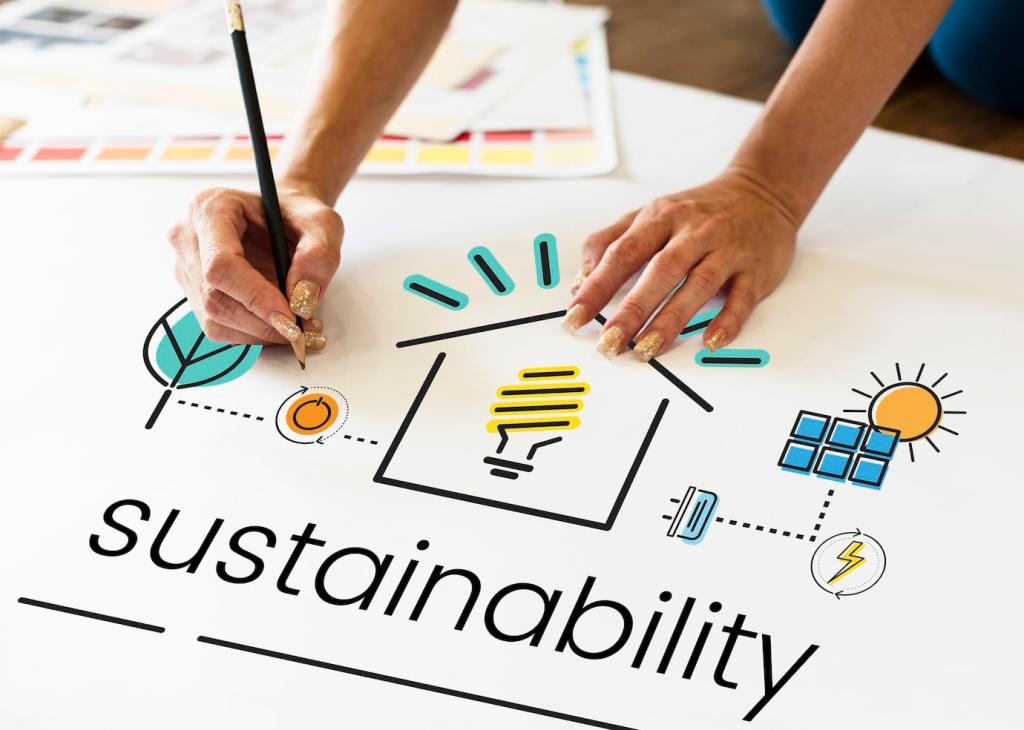Solar Panels for Eco Houses: Turning Sunlight into Everyday Comfort
Today’s chosen theme: Solar Panels for Eco Houses. Welcome to a bright, practical guide for designing, living with, and loving solar power in eco-conscious homes. Stay with us, share your questions, and subscribe for weekly insights sparked directly by real rooftops and real sunshine.

While panels carry embodied carbon from manufacturing, their lifetime generation typically repays that footprint within a few years. In an eco house with efficient envelopes and smart controls, solar’s carbon payback accelerates, turning every additional kilowatt-hour into net environmental benefit.
Why Solar Belongs at the Heart of an Eco House
Solar turns your home into a tiny, steady power plant. With fair net‑metering or smart load shifting, daytime production powers appliances while surplus offsets nights. Add storage, and you buffer outages, stabilize bills, and reduce dependence on distant grids or volatile energy markets.
Why Solar Belongs at the Heart of an Eco House
Designing Roofs and Facades for Maximum Sun
Orientation, Tilt, and Shading Essentials
South-facing arrays (north in the Southern Hemisphere) with tilt near your latitude usually balance annual yield. Trim or strategically plant trees to reduce harsh shadows. Use shade analysis tools or a simple seasonal diary to map obstacles like chimneys, dormers, and nearby buildings.
Building-Integrated Photovoltaics (BIPV)
BIPV replaces conventional materials with power-generating ones: solar shingles, PV glass, or facade laminates. They can preserve clean lines on modern eco houses, reducing material duplication. Consider wind loading, waterproofing details, and electrical pathways early, coordinating architects, structural engineers, and installers closely.
Green Roofs and Solar Synergy
Green roofs keep panels cooler, which boosts their efficiency. Pair low-profile vegetation with elevated racking that maintains airflow and maintenance access. The result is a quiet thermal cushion that nurtures pollinators, protects membranes, and gives your modules a performance edge through hot summers.
Choosing Modules, Inverters, and Storage Wisely
Monocrystalline panels typically deliver higher efficiency and sleek looks, ideal where roof space is limited. Polycrystalline is often cost-effective, while thin‑film excels on lighter or curved surfaces. Compare efficiency, temperature coefficients, and third‑party test data to align technology with your site constraints.

The Money Side: Clear Paybacks, Incentives, and Value
A Simple Payback Example
Consider a 6 kW system producing roughly 8,000 kWh annually, offsetting $0.20 per kWh. That’s $1,600 a year before incentives. If installed cost net of credits is $12,000, simple payback approaches 7.5 years, with decades of low-cost electricity thereafter supporting your eco house goals.
Incentives, Rebates, and Tariffs
Federal credits, state rebates, and fair export tariffs can transform project economics. Verify eligibility early and save every receipt. Beware expiration dates and capacity caps. Your utility’s interconnection rules may influence inverter choices, so ask questions and document phone calls for smooth approvals.
Resale Value and Buyer Confidence
Homebuyers increasingly appreciate documented performance. Keep tidy monitoring records, maintenance logs, and warranty folders. During showings, highlight low utility bills and blackout resilience. One reader sold two days faster after showcasing a year of production charts alongside her eco house’s airtightness certificate.



Living With Solar: Monitoring and Maintenance
Choose monitoring that shows hourly production, consumption, and battery state. Alerts for unexpected drops catch issues early. Compare seasons and note appliance changes. If you share anonymized graphs in the comments, we can crowd‑diagnose vampire loads or inverter settings stealing precious watts.
Living With Solar: Monitoring and Maintenance
In many climates, rain handles panel cleaning. Where pollen or dust accumulates, a gentle rinse during cool hours preserves coatings. In snowy regions, safety first—let sun and gravity work. Align high‑draw chores with sunny periods; those tiny habits compound into noticeable savings.

Community Energy, Shared Learning, and Your Next Step
Community Solar and Microgrids
If your roof isn’t ideal, community solar lets you subscribe to a shared array. Emerging microgrids pair storage with local generation for resilience. Ask your municipality about pilot projects; participating early can bring bill savings and invaluable learning for your eco house plans.
Share Designs, Photos, and Lessons
Post your roof sketches, module layouts, or shading snapshots in the comments. Peer feedback catches details professionals sometimes miss. We’re building a living library of eco house solutions—practical, tested, and honest about tradeoffs. Your story might be the nudge someone else needs.
Subscribe and Shape Future Guides
Subscribe for hands‑on tips, case studies, and interviews with homeowners who have lived through design decisions and winter storms. Vote on upcoming topics, from solar hot water to heat pumps. Your engagement directs our research, ensuring every post serves real eco house projects.
